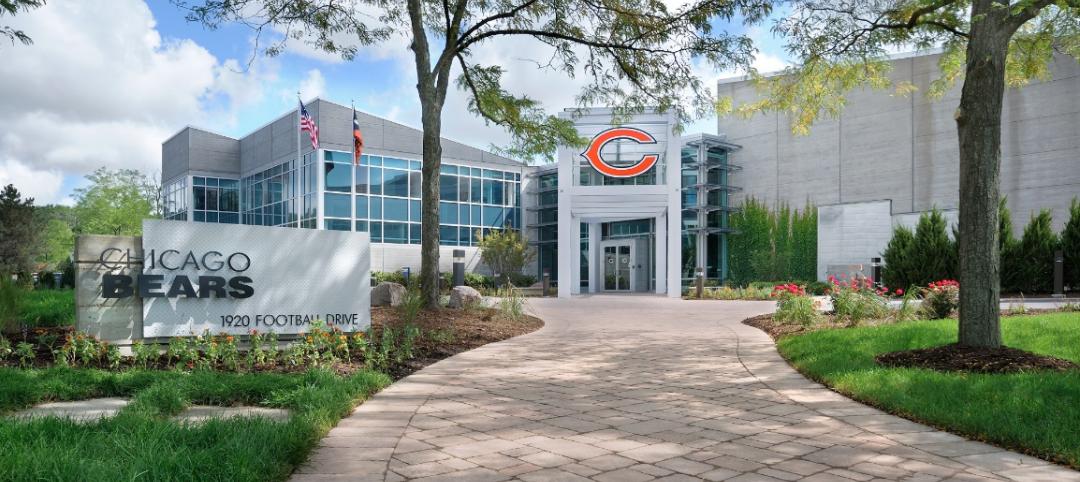
In the days when three-quarters of America was a wild, lawless no-man's land, Pioneer Courthouse in Portland, Ore., stood out as a symbol of justice and national unity. The oldest surviving federal structure in the Pacific Northwest and the second-oldest courthouse west of the Mississippi, Pioneer Courthouse was designed in 1875 by Alfred Mullett, the Supervising Architect of the Treasury. His dramatic three-story, cupola-capped Romanesque monument served as the focal point of Pioneer Courthouse Square, a public plaza in the heart of the City of Roses.
 |
| PHOTOS: MICHAEL MATHERS |
As years went by, however, it became clear that all was not well with this historic landmark. Made of completely unreinforced masonry, the courthouse was at high risk for earthquake damage: one big shake and the whole thing could come toppling down. The threat mobilized a team of government agencies, including the U.S. Court of Appeals, the National Trust for Historic Preservation, and the General Services Administration, into action in 1995. Together, they determined that Pioneer Courthouse needed an upgrade beyond the basic restoration: It would need to be made earthquake-proof, modern and safe, and energy efficient.
Quake, rattle, and roll
The Building Team—led by Donald Eggleston, AIA, of SERA Architects, and Jerry Abdie, of structural engineer KPFF Engineering—had one main concern: earthquake protection. Seismic upgrades comprised $12 million (60%) of the $20 million project cost. The goal was to create a system that would allow the courthouse and the ground to move independently of each other during an earthquake. To achieve this, the team chose to install Oregon's first friction pendulum ground base isolator system.
Comprised of lubricated sliding bearings set into a spherical stainless steel dish, the isolators support the weight of the building and allow it to move in one piece during an earthquake, rather than falling apart as various bits move in different directions. Seventy-five of these isolators were installed beneath the courthouse, each specially tailored for the response requirements of its specific position.
 |
| PHOTOS: MICHAEL MATHERS |
In order to install them, the team had to support the courthouse on pilings and remove the entire original foundation, replacing it with a new pile and pile cap system set below the isolators. Each isolator takes up just one square foot—meaning that the full weight of the courthouse's 24 million pounds now rests on 75 sf of space.
Upgrades to the HVAC, plumbing, and electrical systems (by M/E engineer Paul Schwer or PAE Consulting Engineers, Doug Grassman of contractor J.E. Dunn Northwest, and Bob Brott of CM Art Anderson Associates) also were made with earthquake protection in mind. The new piping in Pioneer Courthouse was designed to be able to withstand three-dimensional motion. Water connections are now able to flex up to 18 inches in any horizontal direction and one inch vertically, which allows them to absorb ground motion instead of breaking under its force. The courthouse is now one of only three buildings in Oregon with a flexible electrical connection system.
Reduce, reuse, remodel
With most of the budget taken up by earthquake proofing, the rest of the work had to be done in an extremely cost-efficient manner. As a result, adaptive reuse became the theme. For example, the original scrolled lighting fixtures were protected in place during construction and later retrofitted with energy-conserving compact fluorescent bulbs. Whole rooms were recycled into new uses, while maintaining their essential historic character. The former post office and mail sorting room became a new main entrance and expanded, state-of-the-art law library. This transformation required the removal of vinyl asbestos tile flooring and an acoustical drop ceiling, which had concealed the original terrazzo floors and decorative wood beam ceiling. Original color schemes and detail work were revived throughout the building, thanks to extensive research of historic photographs, news articles from the Oregon Historical Society archives, and early construction photos preserved by the General Services Administration.
 |
| Among the interior upgrades was the construction of a video conference alternative dispute resolution room where parties can work out their disagreements. PHOTOS: MICHAEL MATHERS |
The interior was also given a major security upgrade. Home to the U.S. Court of Appeals, the building needed to meet the federally mandated safety requirements for this high-risk profession. Surveillance cameras were placed on the building's exterior to act as a visual deterrent. Inside, five underground parking spaces were installed to give the judges a direct, private route from their vehicles to a secure building area.
Motion sustained
Sustainability was also emphasized, notably in the building's HVAC system. The old Pioneer Courthouse had been heated and cooled by an electric boiler, which, besides being extremely inefficient, left occupants with little ability to control their own individual environments. During renovation, this system was replaced by a pair of high-efficiency air handlers and an evaporative chilled-water cooling tower. This system divided the building into small zones, allowing occupants to adjust the temperature in their areas without greatly increasing operational costs.
Also important to the project was the use of materials that were both environmentally friendly and historically accurate. The team used wool carpeting instead of synthetics, formaldehyde-free MDF, linoleum floors instead of vinyl, and high fly-ash concrete—all of which helped minimize the courthouse's ecological footprint. More than 60% of all the construction waste was recycled and diverted from landfill.
As a result, since opening in October 2005, the newly remodeled Pioneer Courthouse's electrical usage is down 30% compared to the same period a year before its renovation.
Related Stories
| Sep 29, 2011
Kohler supports 2011 Solar Decathlon competition teams
Modular Architecture > In a quest to create the ultimate ‘green’ house, 20 collegiate teams compete in Washington D.C. Mall.
| Sep 23, 2011
Curtainwall façade installation at Ohio State Cancer and Critical Care facility
A sophisticated curtainwall facade will be installed at the new OSU Cancer and Critical Care facility.
| Sep 23, 2011
Smart windows installed at NREL
The self-tinting heat-activated filter allows solar heat into the building when it is desired, such as on a sunny winter day.
| Sep 23, 2011
Okanagan College sets sights on Living Buildings Challenge
The Living Building Challenge requires projects to meet a stringent list of qualifications, including net-zero energy and water consumption, and address critical environmental, social and economic factors.
| Sep 20, 2011
PPG, Pleotint to co-market environmentally adaptive glazing technology with low-e glass
Laminated between two lites of glass, SRT interlayer may be used monolithically or within an insulating glass unit.
| Sep 14, 2011
Empire State Building achieves LEED Gold ?
The 2.85 million-sf building is celebrating its 80th anniversary while nearing completion of its renewal and repurposing to meet the needs of 21st Century businesses.
| Sep 14, 2011
Thornton Tomasetti’s Poon named to the Council on Tall Buildings and Urban Habitat’s Board of Trustees
During his 30-plus years of experience, Poon has been responsible for the design and construction of super high-rise structures, mixed-used buildings, hotels, airports, arenas and residential buildings worldwide.
| Sep 12, 2011
LACCD’s $6 billion BIM connection
The Los Angeles Community College District requires every design-build team in its massive modernization program to use BIM, but what they do with their 3D data after construction is completed may be the most important change to business as usual.
| Sep 12, 2011
Scan, Deconstruct, Rebuild
How laser scanning helped improve construction schedules, plans, and final designs for a major reconstruction project.
| Sep 12, 2011
PVs play new roles as a teaching tool
Solar installations are helping K-12 schools around the country save money and teach students the intricacies of renewable energy sources.
















